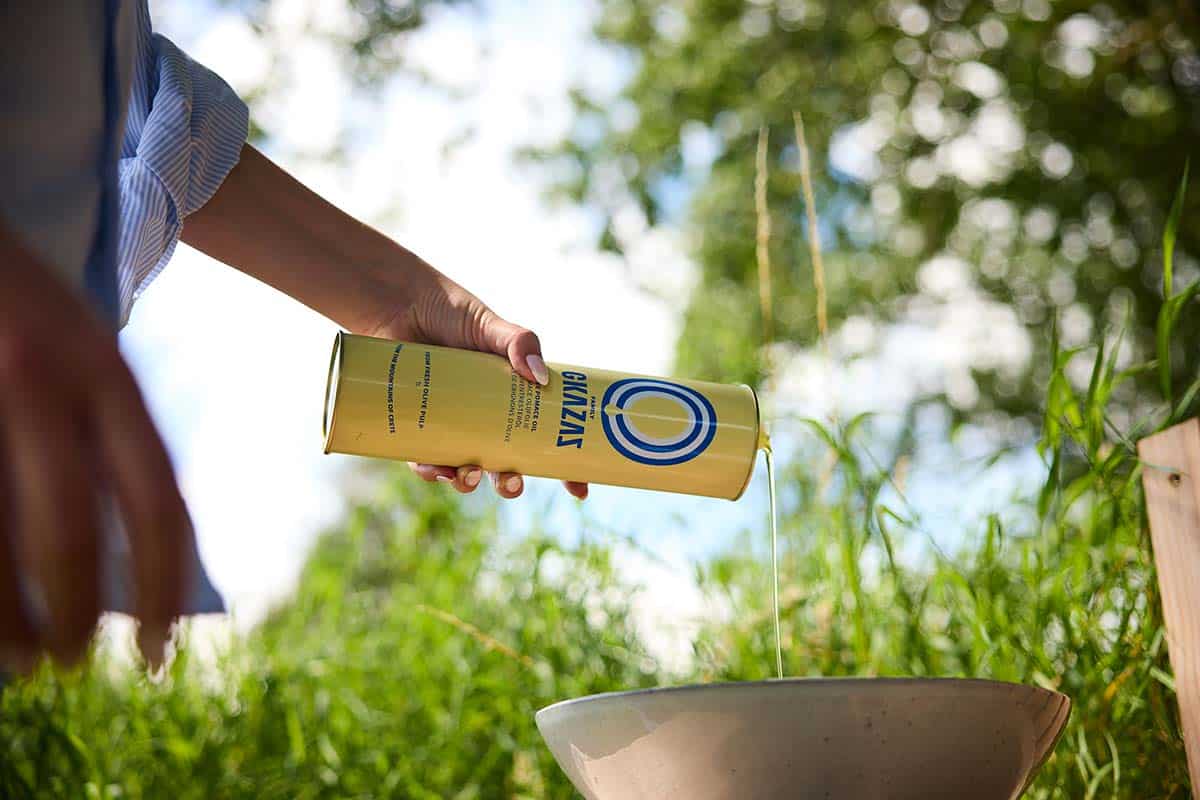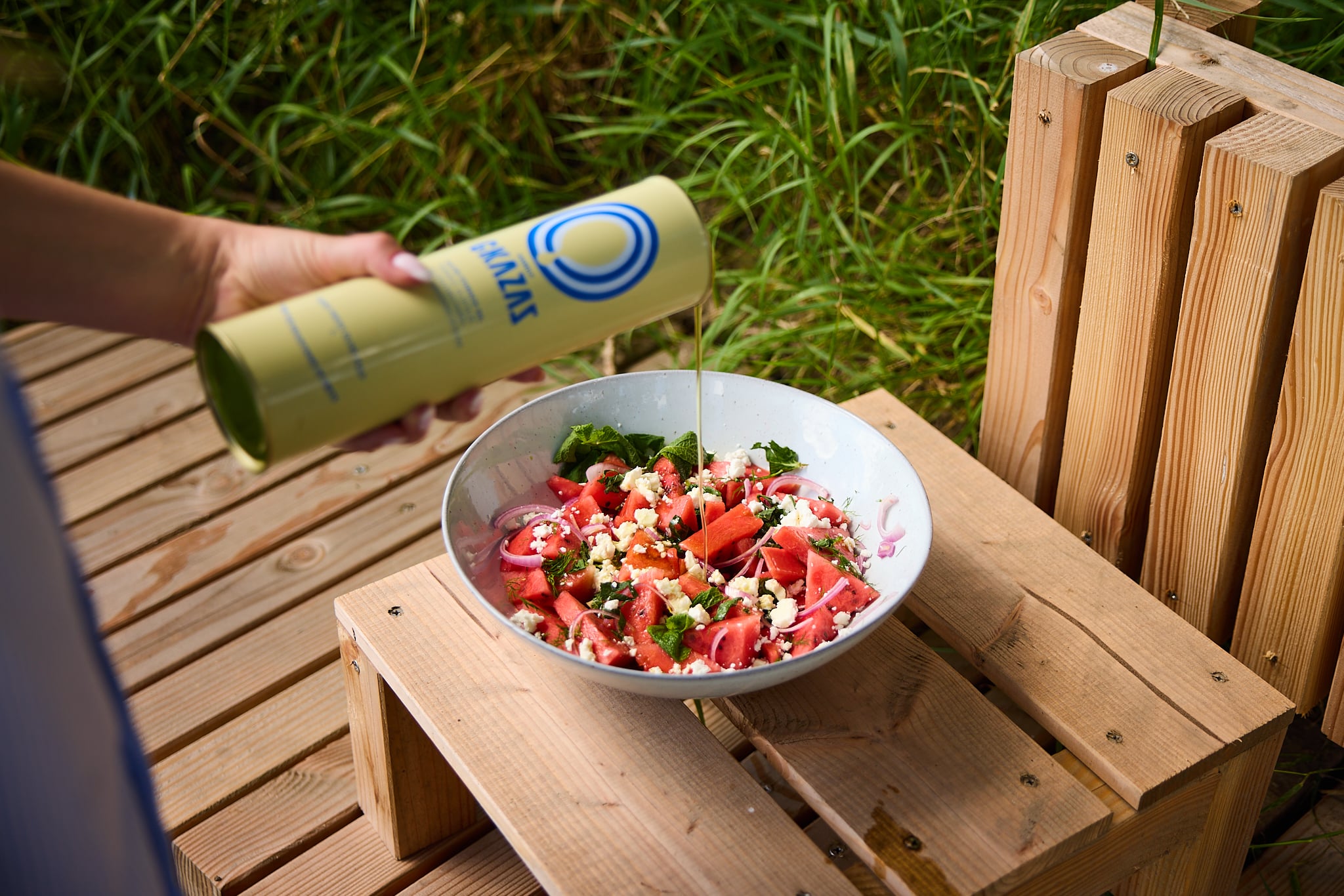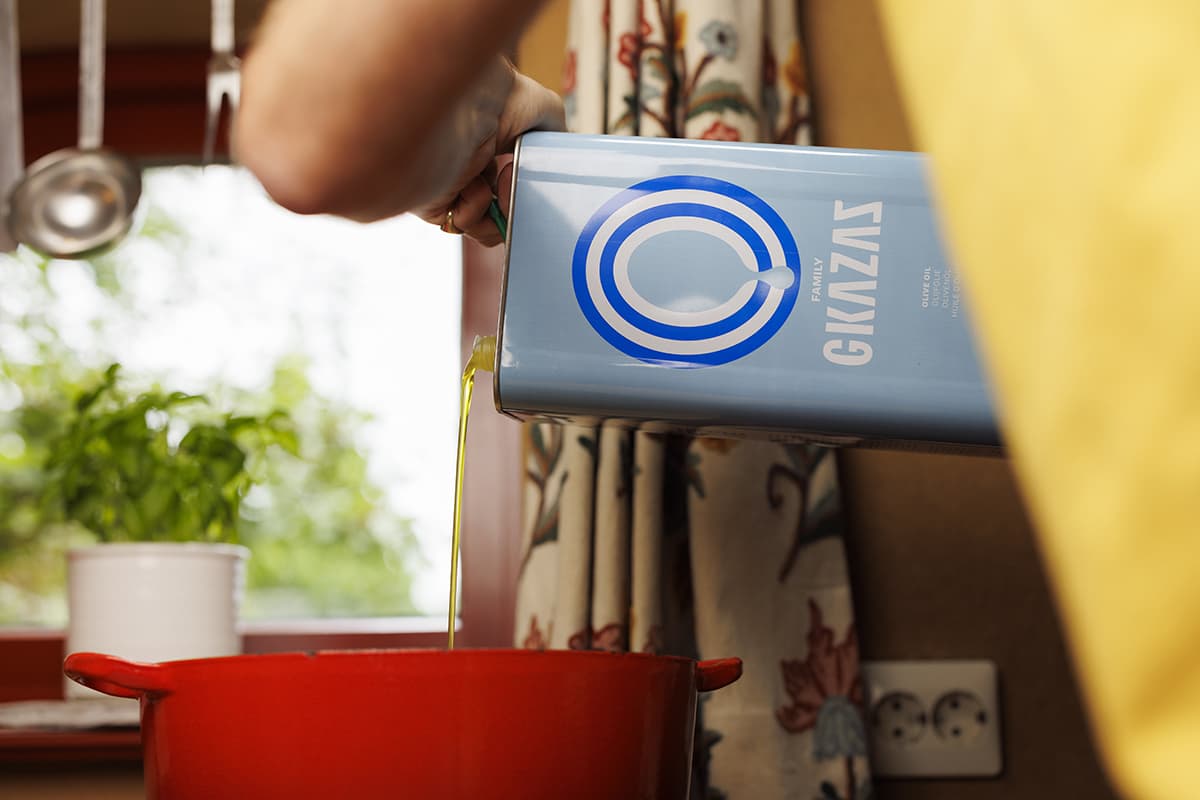The pomace olive oil trend is spreading fast. That’s due to the versatility of the product and its sharp price. But what can you actually use it for? First, we’ll briefly explain what pomace olive oil is, and then we’ll tell you why it’s great for cooking!
What is pomace olive oil?
Alright, let’s start with a quick intro. Our pomace olive oil is made from the fresh olive pulp that remains after pressing our (organic) extra virgin olive oil. We do this completely naturally, without any chemical processes. We then add 10% organic extra virgin olive oil to enrich the flavor and nutrients. This way, nothing from the original olive goes to waste – ideal!
The resulting pomace olive oil has a milder taste and a friendlier price tag than, for example, our organic olive oil. You can read more about what pomace olive oil is, how pomace olive oil is made, and whether pomace olive oil is healthy!
Can you cook with pomace olive oil?
Oh yes — and here’s another benefit: thanks to the production process, this type of olive oil can be safely heated up to 260 degrees Celsius. Our extra virgin olive oil can go up to 207 degrees Celsius, so that’s quite a difference. Its more neutral taste is also a reason to choose pomace olive oil for cooking. For example, if you’re preparing an Asian dish and don’t want a strong olive oil flavor, heating pomace olive oil is a great option. Discover what makes a good pomace olive oil.

In short: yes, you can definitely cook with pomace olive oil. Of course, taste is subjective, so it’s up to you when to use it. Generally speaking, the key factors are: whether or not you want a strong olive oil flavor in your dish, and whether you’re cooking at very high temperatures.
Cooking with pomace olive oil: what are the alternatives?
There are quite a few! Earlier, we compared pomace olive oil to our extra virgin olive oil. Now you know when to go for each type.
But there are other common oils too. The most widely used ones include coconut oil, sunflower oil, and rapeseed oil. We’ve written an article that compares these oils, backed by scientific research for a fair comparison. Check it out here: pomace olive oil versus coconut, sunflower, and rapeseed oil.
Another alternative is butter. We once explored the question: is olive oil healthier than butter? The conclusion was yes — and this also applies to pomace olive oil. Ultimately, the deciding factors are the same in all cases:

According to science, pomace olive oil contains a high amount of unsaturated fats (around 75% on average). Moreover, research shows that pomace olive oil contains many polyphenols (a type of antioxidant). It’s important, though, that the pomace oil is produced in the most natural and respectful way. Lastly, pomace olive oil is included in the Dutch nutrition guidelines (the ‘Schijf van Vijf’). Its exact health score is hard to pinpoint, as olive oil generally scores a 8.3. For pomace olive oil, it will likely be a bit lower – let’s estimate it between 7 and 8.
Heating pomace olive oil, let’s go!
Now you know that among the different types of olive oil, pomace olive oil can be heated to the highest temperatures. With a mild taste and budget-friendly price, this olive oil is perfect for frying and sautéing. You now have all the information you need to decide when and how to use it. Curious to try our pomace olive oil? You can buy pomace olive oil in our shop. Our 1 liter tin is now available at Albert Heijn. For heavier use, there’s also a generous 5 liter tin available through our webshop. Enjoy!
















